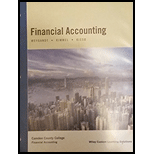
Concept explainers
(a)
Periodic Inventory System:
Periodic inventory system is a system, in which the inventory is updated in the accounting records on a periodic basis such as at the end of each month, quarter or year. In other words, it is an accounting method which is used to determine the amount of inventory at the end of each accounting period.
First-in-First-Out:
In First-in-First-Out (FIFO) method, the costs of the initially purchased items are considered as cost of goods sold, for the items which are sold first. The value of the ending inventory consists of the recent purchased items.
Last-in-First-Out:
In Last-in-First-Out (LIFO) method, the costs of the last purchased items are considered as the cost of goods sold, for the items which are sold first. The value of the closing stock consists of the initial purchased items.
To Compute: The ending inventory at September 30 and cost of goods sold using the FIFO, and LIFO methods.
(b)
Periodic Inventory System:
Periodic inventory system is a system, in which the inventory is updated in the accounting records on a periodic basis such as at the end of each month, quarter or year. In other words, it is an accounting method which is used to determine the amount of inventory at the end of each accounting period.
First-in-First-Out:
In First-in-First-Out (FIFO) method, the costs of the initially purchased items are considered as cost of goods sold, for the items which are sold first. The value of the ending inventory consists of the recent purchased items.
Last-in-First-Out:
In Last-in-First-Out (LIFO) method, the costs of the last purchased items are considered as the cost of goods sold, for the items which are sold first. The value of the closing stock consists of the initial purchased items.
The sum of ending inventory and cost of goods sold under FIFO, and LIFO, and to discuss what is noticed from those answers.
Want to see the full answer?
Check out a sample textbook solution
Chapter 6 Solutions
FINANCIAL ACCOUNTING W/WILEY+ >IP<
- During 2018, Jacob Industries had sales on account of $945,000, cash sales of $372,000, and collections on account of $782,000. As a result of these transactions, the change in the accounts receivable indicates an increase of how much?arrow_forwardWhich accounting principle requires that expenses be recorded in the same period as the revenues they help generate?A. Cost PrincipleB. Revenue Recognition PrincipleC. Matching PrincipleD. Full Disclosure Principlesolve it.arrow_forwardIn pension accounting, actuarial gains and losses are____. a) Recognized in other comprehensive income b) Always recognized immediately in profit or loss c) Deferred indefinitely d) Added to pension obligation directlyarrow_forward
- DC Co. exchanged equipment and $25,000 cash for similar equipment. The book value and fair value of the old equipment were $120,000 and $135,000, respectively. Assuming that the exchange has commercial substance, DC would record a gain/(loss) of __.arrow_forwardPlease show me the valid approach to solving this financial accounting problem with correct methods.arrow_forwardHelp with accounting questionarrow_forward
- Which accounting principle requires that expenses be recorded in the same period as the revenues they help generate?A. Cost PrincipleB. Revenue Recognition PrincipleC. Matching PrincipleD. Full Disclosure Principlearrow_forwardI need guidance with this financial accounting problem using the right financial principles.arrow_forwardWhat is the formula for calculating the weighted average cost of capital (WACC)?A) WACC = (Cost of Debt × Proportion of Debt) + (Cost of Equity × Proportion of Equity)B) WACC = (Cost of Debt + Cost of Equity) / 2C) WACC = Cost of Debt + Cost of EquityD) WACC = Proportion of Debt + Proportion of Equityarrow_forward

 AccountingAccountingISBN:9781337272094Author:WARREN, Carl S., Reeve, James M., Duchac, Jonathan E.Publisher:Cengage Learning,
AccountingAccountingISBN:9781337272094Author:WARREN, Carl S., Reeve, James M., Duchac, Jonathan E.Publisher:Cengage Learning, Accounting Information SystemsAccountingISBN:9781337619202Author:Hall, James A.Publisher:Cengage Learning,
Accounting Information SystemsAccountingISBN:9781337619202Author:Hall, James A.Publisher:Cengage Learning, Horngren's Cost Accounting: A Managerial Emphasis...AccountingISBN:9780134475585Author:Srikant M. Datar, Madhav V. RajanPublisher:PEARSON
Horngren's Cost Accounting: A Managerial Emphasis...AccountingISBN:9780134475585Author:Srikant M. Datar, Madhav V. RajanPublisher:PEARSON Intermediate AccountingAccountingISBN:9781259722660Author:J. David Spiceland, Mark W. Nelson, Wayne M ThomasPublisher:McGraw-Hill Education
Intermediate AccountingAccountingISBN:9781259722660Author:J. David Spiceland, Mark W. Nelson, Wayne M ThomasPublisher:McGraw-Hill Education Financial and Managerial AccountingAccountingISBN:9781259726705Author:John J Wild, Ken W. Shaw, Barbara Chiappetta Fundamental Accounting PrinciplesPublisher:McGraw-Hill Education
Financial and Managerial AccountingAccountingISBN:9781259726705Author:John J Wild, Ken W. Shaw, Barbara Chiappetta Fundamental Accounting PrinciplesPublisher:McGraw-Hill Education





